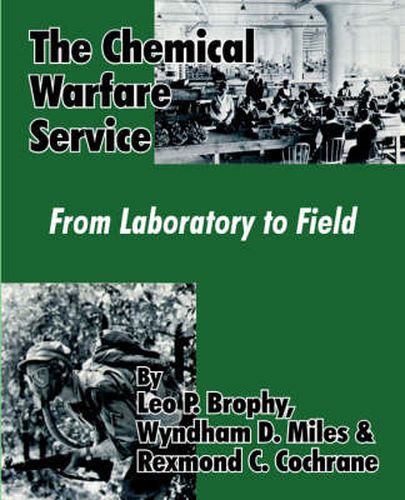Readings Newsletter
Become a Readings Member to make your shopping experience even easier.
Sign in or sign up for free!
You’re not far away from qualifying for FREE standard shipping within Australia
You’ve qualified for FREE standard shipping within Australia
The cart is loading…






This title is printed to order. This book may have been self-published. If so, we cannot guarantee the quality of the content. In the main most books will have gone through the editing process however some may not. We therefore suggest that you be aware of this before ordering this book. If in doubt check either the author or publisher’s details as we are unable to accept any returns unless they are faulty. Please contact us if you have any questions.
Rather belatedly, the United States Army in preparing for World War II investigated on an intensive and very large scale the chemical munitions that might be necessary or useful in fighting the Axis powers. This effort required the collaboration of a host of civilian scientists and research centers as well as a great expansion of the laboratories and proving grounds of the Chemical Warfare Service itself. A similar development, recounted at the beginning of this work, came too late to influence the outcome of World War I. In World War II, on the other hand, the Army not only prepared against gas warfare sufficiently well to discourage its employment by the enemy, but also developed a number of new chemical weapons that contributed materially to victory. The authors add perspective and interest to their story by telling very briefly about corresponding German and Japanese activity. The manufacture of chemical munitions in quantity was possible only through a rapid expansion of private industry to support and supplement the work of Army arsenals. Both necessity and choice led the Chemical Warfare Service to make widespread use of small industrial concerns throughout the United States, and the account of production in this work is especially pertinent to a consideration of the problems involved in military contracting with small business on a big scale.
$9.00 standard shipping within Australia
FREE standard shipping within Australia for orders over $100.00
Express & International shipping calculated at checkout
This title is printed to order. This book may have been self-published. If so, we cannot guarantee the quality of the content. In the main most books will have gone through the editing process however some may not. We therefore suggest that you be aware of this before ordering this book. If in doubt check either the author or publisher’s details as we are unable to accept any returns unless they are faulty. Please contact us if you have any questions.
Rather belatedly, the United States Army in preparing for World War II investigated on an intensive and very large scale the chemical munitions that might be necessary or useful in fighting the Axis powers. This effort required the collaboration of a host of civilian scientists and research centers as well as a great expansion of the laboratories and proving grounds of the Chemical Warfare Service itself. A similar development, recounted at the beginning of this work, came too late to influence the outcome of World War I. In World War II, on the other hand, the Army not only prepared against gas warfare sufficiently well to discourage its employment by the enemy, but also developed a number of new chemical weapons that contributed materially to victory. The authors add perspective and interest to their story by telling very briefly about corresponding German and Japanese activity. The manufacture of chemical munitions in quantity was possible only through a rapid expansion of private industry to support and supplement the work of Army arsenals. Both necessity and choice led the Chemical Warfare Service to make widespread use of small industrial concerns throughout the United States, and the account of production in this work is especially pertinent to a consideration of the problems involved in military contracting with small business on a big scale.